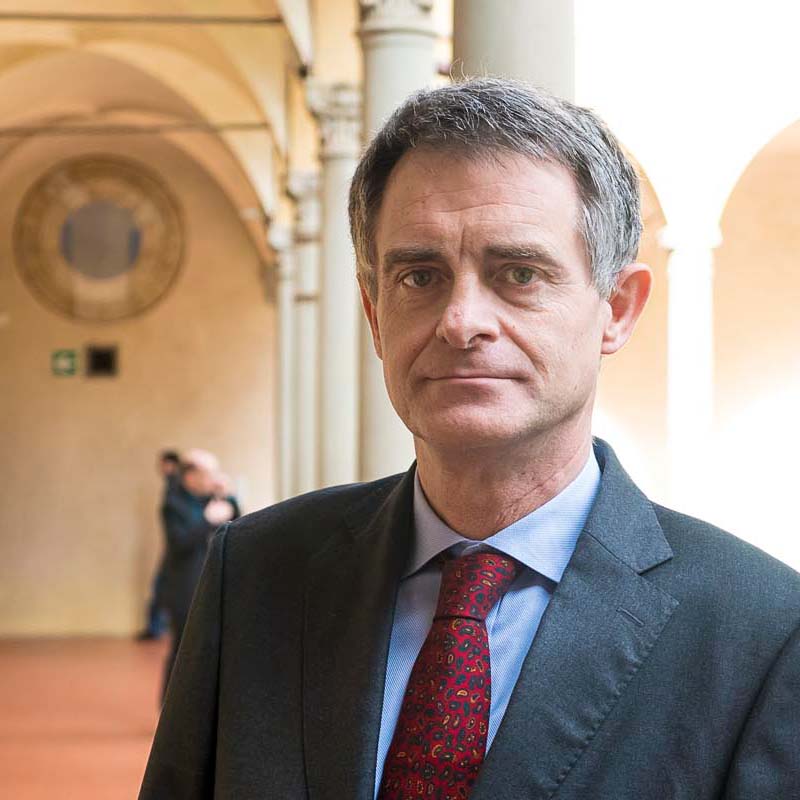The future electricity market design
This is the second installment of the Topic of the Month: Reflections on Draghi's report
The reform of the electricity market design
The reform of the electricity market design (EMD) adopted in May 2024[1] aimed “to boost renewables, better protect consumers and enhance industrial competitiveness”. Despite calls for an overhaul of the short-term market, including by a number of very prominent and influential figures[2], the reform confirmed the ‘marginal pricing’ design of the day-ahead market, which is in fact ever more important to provide accurate short-term price signals. These signals are essential to attract the resources necessary to increase the flexibility of the electricity system that the increasing penetration of variable renewable-based generation requires.
Therefore, despite being labelled as a ‘reform’, the latest amendments to the EU electricity market rules can be seen as complementing the existing short-term markets, whose design has not been fundamentally changed, with additional features and instruments on the long-term timeframe to protect consumers from future price spikes and stabilise electricity costs for industry and revenues for renewable-based and other generators.
To reach net zero as required by the EU Climate Law of 2021[3], the scale of investment in Europe must be drastically ramped up in the last half of this decade. Interim targets are already being missed. The challenges to raise the predicted investments of over 650 billion euros – a large percentage of which must be mobilised from the private sector – requires an urgent rethinking of the role of long-term contracts in securing rapid and deep decarbonisation in the energy transition.
Power Purchase Agreements and two-way Contracts for Difference
In particular the new EMD Regulation[4] promotes the use of Power Purchase Agreements (PPAs) and two-way Contracts for Difference (CfDs). “PPAs are bilateral purchase agreements between producers and buyers of electricity that are concluded on a voluntary basis and are based on market price conditions without regulatory interventions in price-setting. PPAs provide long-term price stability for the customer and the necessary certainty for the producer to take the investment decision”[5].
A two-way CfD is a contract between a power-generating facility operator and a counterpart, usually a public entity, that provides both minimum remuneration protection and a limit to excess remuneration.
Two-way CfDs, or equivalent schemes with the same effects, and PPAs play complementary roles in advancing the energy transition and bringing the benefits of renewable energy and low carbon energy to consumers. Subject to the requirements introduced by the EMD Regulation[6], and the European state aid rules, and as further explained in the recent FSR Report on the role of long term contracts in the energy transition[7], Member States should be free to decide which instruments they use to achieve their decarbonisation objectives. Through PPAs, private consumers contribute to additional renewable energy and low carbon energy deployment, while locking stable electricity prices over the long-term. Likewise, through two-way CfDs or equivalent schemes with the same effects, the same objective is achieved by public entities on behalf of consumers. Both instruments are necessary to achieve the Union’s decarbonisation targets through renewable energy and low carbon energy deployment, while bringing forward the benefits of low-cost electricity generation for consumers.
CfDs are now the default mechanism for Member States to provide state aid in the form of price support to investment in new generation from wind, solar, geothermal and nuclear energy, as well as from hydropower without reservoirs[8].
The importance of both instruments to promote European competitiveness was also stressed by Mr Draghi in his recent Report[9], where he proposed to “decouple the remuneration of RES and nuclear from fossil-fuel generation though long-term Contracts (PPAs and two-way CfDs) to limit the impact of natural gas on electricity prices”[10]. He reasons that this, in conjunction with other proposals for the electricity sector, “should help to accelerate the supply of cheaper power generation sources (enabling the development of renewable energy, while maintaining and expanding nuclear and hydropower supply)”. It is worth noting that Mr Draghi also recommended to “keep the marginal pricing system to ensure the efficient balance of the energy system. This would help to send accurate price signals driving generation and consumption at the right time and location in the short term”[11].
In our opinion, the need to maintain a well-functioning, liquid short-term market in the face of an increasing use of long-term contracts – such as PPAs and CfDs – requires the careful design of such contracts. In particular, while protecting the revenues of generators and investors in renewable-based generation and the electricity costs for consumers from the uncertainty of future electricity price fluctuations, these contracts should not totally remove the exposure of the contractual counterparts to spot prices, so as to promote their participation and engagement in short-term market where they can contribute to the provision of the required flexibility. In the case of CfDs, this can be achieved by the ‘difference payments’ not being determined by reference to actual generation volumes and spot prices in the individual market time units[12]. In the case of PPAs, engagement in short-term markets of both the generator and the consumer might be promoted, inter alia, by predefining the contractual quantities. In this way, any increase or reduction in generation or consumption to respond to short-term price signals would be valued at the spot price, thus conveying the correct price signals for efficient implicit flexibility[13].
The challenge, both for PPAs and CfDs, is how to ensure their rapid uptake, not only for new generation capacity, but also for existing capacity. In the case of CfDs, their use for any public financial support for new generation capacity is now mandated by the legislation. CfDs are also in use for existing generation from renewables in a number of Member States, but there is also a variety of other support schemes in place. However, the design of most of the existing CfD schemes and other support mechanisms could provide distortive incentives to the participation of the contracted capacity in the short-term markets and have been seen to contribute to the emergence of negative prices not reflective of actual demand and supply conditions[14].
In the case of PPAs, their uptake is clearly voluntary and the speed with which they will be put in place will depend to whether attractive contract terms, including price conditions, which satisfy both demand and supply, could be agreed. For both parties to the contract, PPAs should reduce exposure to price fluctuations, and therefore, in this respect, should provide benefits to both buyers and sellers.
However, generators might have more ‘optimistic’ price expectations than consumers, and therefore the question is whether there is a price level which is considered attractive, or at least acceptable, by both generators and consumers. Since some generators have enjoyed unexpected profits over the last few years, they might be more willing to remain exposed to market dynamics rather than commit to fixed prices that they might consider not equally remunerative. At the same time, consumers, having been exposed to high prices in recent times, might expect more affordable terms in PPAs. Therefore, it remains to be seen whether the respective expectations of generators, on the one side, and large consumers and suppliers[15], on the other side, will be able to be matched through PPAs so that such instruments will develop as expected.
As mentioned, in the case of PPAs, active engagement in short-term markets could be promoted by having fixed contractual quantities. Such an approach would also assist in the standardisation of these contracts and therefore a more liquid secondary market for them.
One last point we would like to comment on is another proposal by Mr Draghi to “require suppliers to supply a predefined minor share of their publicly subsidised production through PPAs at ‘production cost plus mark-up’ to specific industries exposed to international competition This could also be presented as a release of CfDs”[16]. In order for suppliers to be able to offer such concessionary PPAs, they would need to procure the related energy at suitable prices. This aspect goes back to the issue of the willingness of any producer to enter into such contracts, especially if these contracts envisage prices below prevailing market conditions. If the energy were to be sourced from CfDs, i.e. if the scheme were “presented as a release of CfDs”, and CfDs were allocated through auctions, it would seem unlikely that such a condition would not be reflected in higher strike prices requested by renewable energy promoters in such auctions. One way or another, such a proposal would be difficult to implement without some public support or would result in cross-subsidisation between different classes of customers. In other words, the EU state aid rules would come back into play.
[1] Directive (EU) 2024/1711 of the European Parliament and of the Council of 13 June 2024 amending Directives (EU) 2018/2001 and (EU) 2019/944 as regards improving the Union’s electricity market design and Regulation (EU) 2024/1747 of the European Parliament and of the Council of 13 June 2024 amending Regulations (EU) 2019/942 and (EU) 2019/943 as regards improving the Union’s electricity market design.
[2] See, for example, the interview to Fatih Birol, Executive Director of the International Energy Agency, in El País, 31 January 2022: Q: Varios Gobiernos europeos, entre ellos el español, han pedido a Bruselas cambios en el sistema marginalista de fijación de los precios de la luz. ¿Tiene sentido? A: “Así lo creo. Los países deberían tener flexibilidad para elegir la forma en la que quieren fijar el precio”. Or “We still have an electricity market that is designed in a way like it was necessary twenty years ago, when we started to bring in the renewables. […] Today the market is completely different and this market system does not work anymore” (Ursula von der Leyen, President of the European Commission, in the European Parliament, 8 June 2022)
[3] Regulation (EU) 2021/1119 of the European Parliament and of the Council of 30 June 2021 establishing the framework for achieving climate neutrality and amending Regulations (EC) No 401/2009 and (EU) 2018/1999 (“European Climate Law”).
[4] Regulation (EU) 2024/1747
[5] Recital (28) of Regulation (EU) 2024/1747. See also Article 2(76) and (77) of the same Regulation for the definitions of CfD and PPA.
[6] Regulation (EU) 2024/1747.
[7] Leigh Hancher, Guillaume Dezobry, Jean-Michel Glachant and Emma Menegatti, ‘Leveraging the Energy Transition: the role of long-term contracts’, FSR Report 2024, available at:
https://cadmus.eui.eu/bitstream/handle/1814/76880/RSC_TR_2024_05.pdf?sequence=1&isAllowed=y
[8] Article 19d(1) and (4) of Regulation (EU) 2019/943 of the European Parliament and of the Council of 5 June 2019 on the internal market for electricity (recast), as amended by Article 2(9) of Regulation (EU) 2024/1747. Legislation also allows the use of “equivalent schemes with the same effects”.
[9] Mario Draghi, The future of European competitiveness, September 2024, available at: https://commission.europa.eu/topics/strengthening-european-competitiveness/eu-competitiveness-looking-ahead_en#paragraph_47059.
[10] Ibid., Table 15, page 32, of Part B.
[11] Ibid., page 35 of part B.
[12] For an extensive illustration of the challenges in properly designing CfDs, see, for example, Lena Kitzing, Anne Held, Malte Gephart, Fabian Wagner, Vasilios Anatolitis, Corinna Klessmann, “Contracts-for-Difference to support renewable energy technologies: Considerations for design and implementation”, Research Report RSC/FSR March 2024, available at: https://cadmus.eui.eu/bitstream/handle/1814/76700/RSC_TR_2024_03.pdf?sequence=1&isAllowed=y.
[13] ‘Implicit flexibility’ is here used to refer to the reaction of generators and consumers to price signals, in analogy to, and as a generalisation of, ‘implicit demand response’ in the case of consumers. Instead, explicit flexibility and explicit demand response refer to the participation of market actors, including consumers, in flexibility (or balancing) markets.
[14] “In general, the increasing number of negative prices is related to the increasing penetration of variable RES. This is true especially when part of these generators is subsidised with payments that do not depend on the instantaneous needs of the system”. ACER, Market Monitoring Report 2020 – Electricity Wholesale Market Volume, January 2022, paragraph 117, page 38.
[15] According to Article 18a of Regulation (EU) 2019/943 of the European Parliament and of the Council of 5 June 2019 on the internal market for electricity (recast), as amended by Article 2(6) of Regulation (EU) 2024/1747, suppliers shall “have in place and implement appropriate hedging strategies, to limit the risk of changes in wholesale electricity supply to the economic viability of their contracts with customers, while maintaining liquidity on and price signals from short-term markets”.
[16] Mario Draghi, The future of European competitiveness, September 2024, page 37 of part B.







